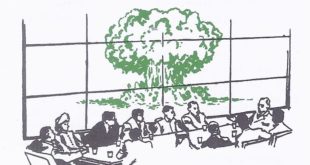The postwar stirring of nationalism among peoples in Asia and Africa, was one important outcome of World War 2, but World War 2 created another great yearning that was world-wide, the desire for a firm and lasting peace. This greatest of all conflicts had uprooted millions from their homes, destroying their means of livelihood. It had brought death, sorrow and a great war-weariness. News of the Allied victory in 1945 was received in a spirit of quiet relief and hope for the future. Following World War 2 a split developed between the free world (designated by the NATO flag) and …
Read More »World Faces New Challenges
Nationalist Beliefs in Asia and Africa after WW 2
Nationalist beliefs in Asia and Africa swept over changes in many lands. In the spring of 1955, the city of Bandung, Indonesia, was tense with excitement. Crowds lined the streets to catch glimpses of delegates attending an international conference. The citizens of Bandung saw Arab diplomats arrive, dressed in the flowing robes and headdress of the desert. They saw prime ministers and foreign ministers wearing the jaunty caps and spotless white clothing popular in tropical South Asia. The rest of the world watched too, for the Bandung Conference was the first of its kind ever to be held. Only Asian …
Read More »
